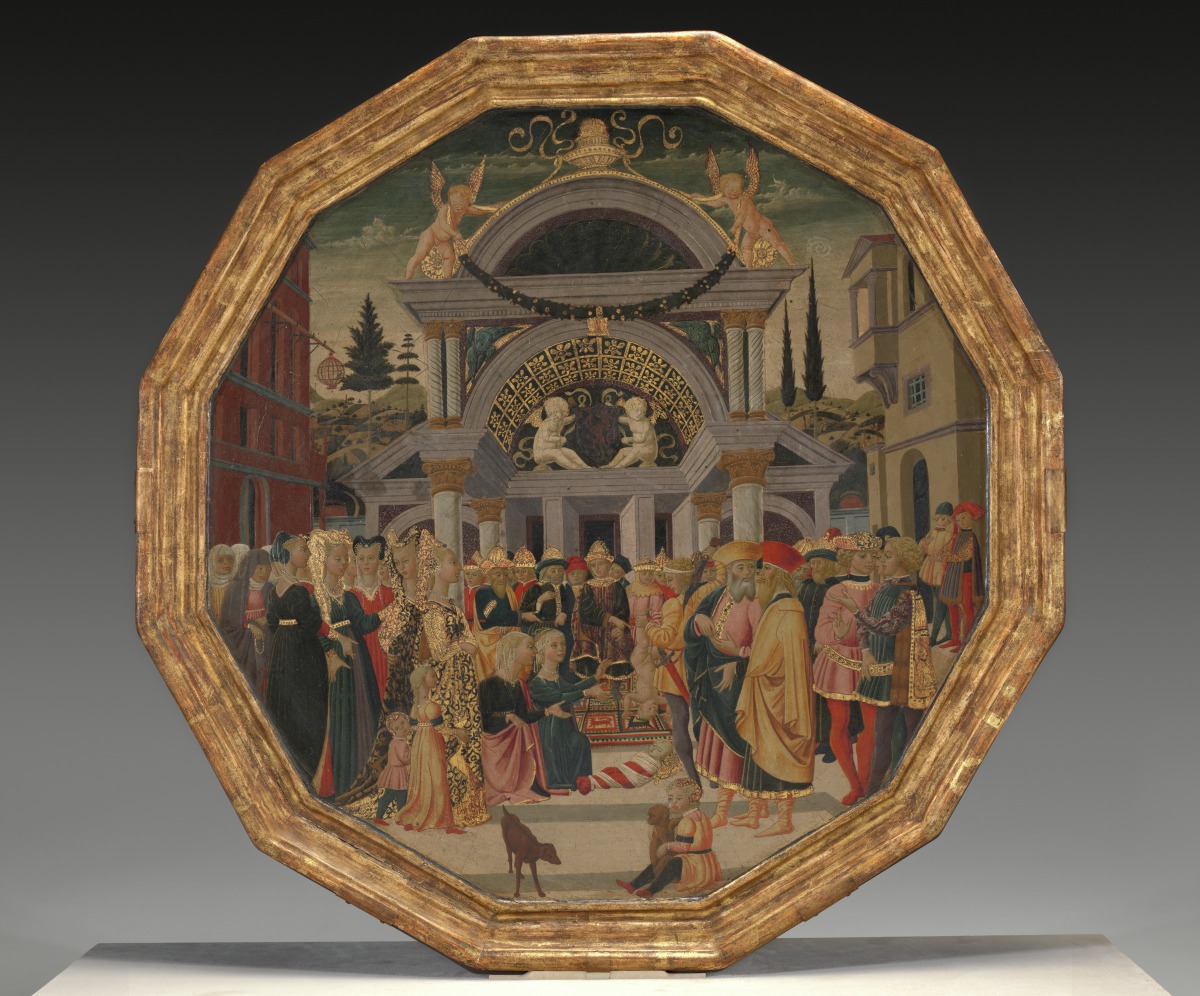
The Judgment of Solomon (recto); Faith (verso) (Primary Title)
Desco da parto (birth salver) (Object Name)
The Judgment of Solomon (Former Title)
Marriage or Birth Salver, depicting "The Judgment of Solomon" on the obverse and a Figure of an unidentified Virtue between the Arms of Davanzati and Ginori (Former Title)
Giovanni di ser Giovanni Guidi (called "lo Scheggia"), Italian, Florentine, 1406 - 1486 (Artist)
This painting is called a birth salver, customarily commissioned during the Italian Renaissance to celebrate the birth of a child. Appropriately, the subject matter concerns birth and legitimacy. According to the Old Testament story of King Solomon found in 1 Kings:3, two women each claimed to be the mother of the same child. To settle the dispute, Solomon ordered a soldier to cut the infant in two, wisely calculating that he could discover the real mother by the women’s reactions.
The painting captures the climactic moment of the story: as the soldier grabs the child by the foot and raises his sword, one woman lifts her hands toward the infant and gives up her claim in order to spare the child’s life. She is obviously the child’s mother, and Solomon will award the infant to her.
The pageantry and fanfare in Giovanni’s work are typical of the festive art that decorated the homes of wealthy Florentine families at this time. To depict the elaborate architectural setting, Scheggia used one-point perspective, a technique also studied in depth by his more famous older brother, Masaccio.
Problem Paintings, Vassar College Art Gallery, Poughkeepsie, N.Y., October 13-November 14, 1965 (as School of Ferrara).
Vanity Fair Exhibition, California Palace of the Legion of Honor, San Francisco, Cal., June 16 – July 16, 1942, no. 4 (cat. Jermayne MacAgy, p. 12, lent by Duveen and exhibited as by the Mas-ter of the Jarves Cassoni).
[1] According to Duveen brochure (in file). In a letter of September 1, 1984, Everett Fahy claims that the collection of G. Richard, Marseilles, was sold in the nineteenth century, and suggests that the provenance of 46.18.1 from his collection is incorrect. The Duveen brochure, however, mentions a G. Richard in Paris, not Marseilles, and perhaps refers to a different collection.
[2] According to a handwritten note on the back of a photograph at the Fototeca Federico Zeri, Università di Bologna (inv. 36351).
Some object records are not complete and do not reflect VMFA's full and current knowledge. VMFA makes routine updates as records are reviewed and enhanced.

